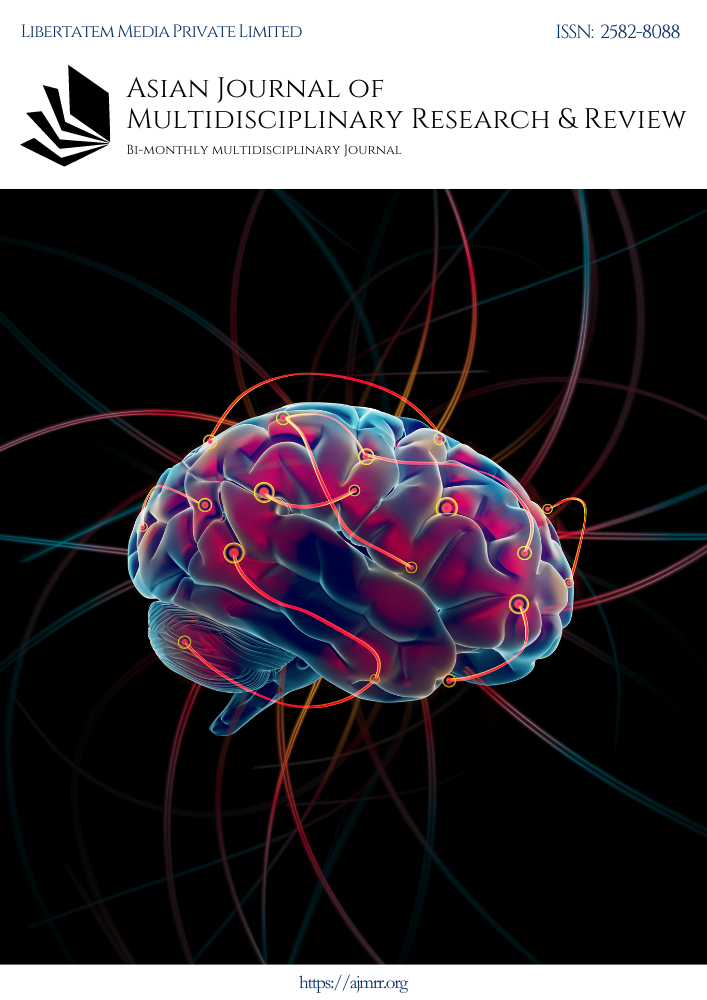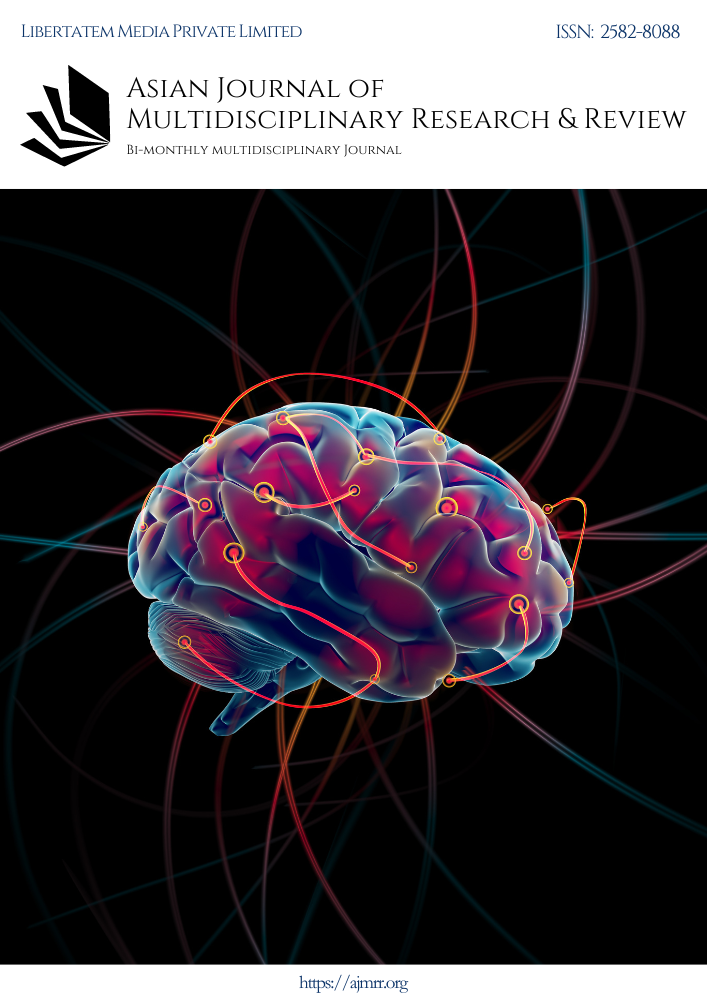Machine Learning Techniques for Advanced Driver Assistance Systems (ADAS) in Automotive Development: Models, Applications, and Real-World Case Studies
Keywords:
Machine Learning, Advanced Driver Assistance Systems (ADAS), Object Detection, Deep Learning, Convolutional Neural Networks (CNNs), Lane Detection, LiDAR, Radar, Driver Monitoring Systems (DMS), Autonomous VehiclesAbstract
The rapid development of the automotive industry is fueled by a relentless pursuit of enhanced road safety and driver comfort. Advanced Driver Assistance Systems (ADAS) represent a technological vanguard in this endeavor, leveraging sophisticated sensor suites and computational power to augment human perception and decision-making behind the wheel. This research paper delves into the burgeoning application of machine learning (ML) techniques in the development of ADAS functionalities.
The paper commences with a comprehensive overview of the ADAS landscape, detailing its core functionalities that encompass a spectrum of driver assistance features. This includes Automatic Emergency Braking (AEB), Forward Collision Warning (FCW), Lane Departure Warning (LDW), Adaptive Cruise Control (ACC), and Traffic Sign Recognition (TSR), among others. Each of these functionalities relies on robust object detection, classification, and tracking capabilities, paving the way for a detailed exploration of pertinent ML techniques employed in ADAS development.
A significant portion of the paper is dedicated to explicating the role of deep learning, particularly Convolutional Neural Networks (CNNs), in object detection and recognition tasks within ADAS. The paper delves into the theoretical underpinnings of CNN architecture, highlighting the efficacy of convolutional layers in extracting spatial features from sensor data, particularly camera images. The power of rectified linear units (ReLUs) and pooling layers in enhancing network performance is also addressed. The discussion on CNNs encompasses the exploration of popular architectures like YOLO (You Only Look Once) and SSD (Single Shot MultiBox Detector) – known for their real-time processing capabilities – which are demonstrably well-suited for ADAS applications.
Beyond object detection and recognition, lane detection plays a pivotal role in various ADAS functionalities, particularly Lane Departure Warning (LDW) and Lane Keeping Assist (LKA). The paper examines traditional lane detection methods based on image processing techniques like edge detection and the Hough transform. However, the focus shifts towards the integration of deep learning models for lane detection, specifically architectures like FCNs (Fully Convolutional Networks) that excel at pixel-wise image segmentation tasks. This enables the delineation of lane markings with exceptional accuracy, even under challenging lighting conditions.
The paper acknowledges the limitations of solely relying on camera data for robust object detection and tracking in dynamic environments. It underscores the importance of sensor fusion, where data from cameras is synergistically combined with information from LiDAR (Light Detection and Ranging) and Radar sensors. LiDAR provides high-resolution 3D point cloud data of the surroundings, enhancing object localization and distance estimation. Radar, on the other hand, excels in adverse weather conditions where camera performance suffers. The paper explores the role of machine learning in processing and interpreting sensor fusion data, leading to a more comprehensive understanding of the driving environment for enhanced ADAS performance.
Driver monitoring systems (DMS) constitute another frontier of ADAS development that leverages machine learning for improved driver behavior analysis. The paper examines the application of CNNs in analyzing facial features and eye gaze patterns to detect signs of driver drowsiness, distraction, or fatigue. This information can be used to trigger visual or auditory alerts, prompting the driver to regain focus on the road.
To solidify the theoretical discourse with practical validation, the paper presents real-world case studies that showcase the effectiveness of machine learning in ADAS development. These case studies could encompass:
- A comparative analysis of the performance of traditional rule-based and machine learning-based approaches for pedestrian detection in ADAS. This analysis would quantitatively demonstrate the superior accuracy and reliability of machine learning models in real-world driving scenarios.
- An evaluation of the efficacy of a deep learning-powered lane departure warning system. The case study could involve testing the system's performance on various road types and under diverse weather conditions to highlight its robustness and adaptability.
- A case study investigating the impact of machine learning-driven driver monitoring systems on accident reduction rates. This could involve analyzing data from on-road trials to quantify the positive influence of DMS on driver behavior and overall road safety.
This paper posits that machine learning techniques are revolutionizing the development of ADAS functionalities. By enabling robust object detection, classification, tracking, and driver behavior analysis, machine learning paves the way for a paradigm shift towards safer and more convenient driving experiences. The paper emphasizes the need for continuous research and development to refine existing ML models and explore new applications that will ultimately contribute to the realization of fully autonomous vehicles.
Downloads
References
X. Huang, X. Li, M. Ren, J. Sun, and X. Wang, "Deep learning for semantic segmentation using contextual pyramid pooling," in Proceedings of the IEEE Conference on Computer Vision and Pattern Recognition, pp. 1794-1801, 2015.
J. Levinson, J. Wu, J. Glaser, and S. Telang, "Mapping with sparse and incomplete data," in Proceedings of the IEEE International Conference on Robotics and Automation, pp. 1165-1170, 2007.
S. Maddern, M. Fisher, M. Bryson, and D. Pétrie, "VV++: Robust and efficient visual odometry for mobile robots," in Proceedings of the IEEE Robotics and Automation Letters, vol. 3, no. 1, pp. 762-769, 2018.
C. Premebida, O. Ludwig, and U. Nunes, "Lidar-based 3D object detection for autonomous vehicles: A review," Sensors, vol. 19, no. 11, p. 2600, 2019.
J. Zhang and S. Singh, "LIDAR-based road marking detection for autonomous vehicle navigation," IEEE Transactions on Intelligent Transportation Systems, vol. 18, no. 5, pp. 1398-1411, 2017.
Y. Bao, X. Zhou, H. Yin, K. Li, and L. Zhang, "Deep learning for lane departure warning system: A survey," arXiv preprint arXiv:1904.01869, 2019.
X. Chen, H. Ma, J. Wan, B. Li, and T. Xia, "Simultaneous detection and tracking of vehicles for intelligent transportation systems using deep learning," IEEE Transactions on Intelligent Transportation Systems, vol. 19, no. 5, pp. 1709-1718, 2018.
Z. Guo, W. Zou, and D. Ni, "Deep learning for object detection with a progressive refinement network," IEEE Transactions on Pattern Analysis and Machine Intelligence, vol. 40, no. 9, pp. 2085-2098, 2018.
P. Luo, Z. Qin, H. Zhou, Y. You, and Z. Lei, "Attentional cluster counting for crowd density estimation," in Proceedings of the IEEE Conference on Computer Vision and Pattern Recognition, pp. 1057-1066, 2018.
J. Redmon and A. Farhadi, "YOLOv3: An incremental improvement," arXiv preprint arXiv:1804.02767, 2018.
W. Bao and D. J. Barnard, "Drowsiness detection in advanced driver-assistance systems: A survey," IEEE Transactions on Intelligent Transportation Systems, vol. 20, no. 6, pp. 2067-2078, 2019.
M. Beznosov and M. Winkler, "Eye-blinking pattern analysis for drowsiness detection in real-time systems," in 2016 12th International Conference on Advanced Systems in Biomedical Engineering and Medicine (ASBEM), pp. 1-4, IEEE, 2016.
E. J. Klauer, A. C. Aldrich, W. C. Atkinson, S. T. Cartier, C. M. Neal, D. L. Ranney, and M. G. Webb, "Fatigue and alertness in commercial motor vehicle drivers," Accident Analysis & Prevention, vol. 36, no. 5, pp. 699-709, 2004.
M. Pantic and L. J. M. Rothkrantz, "Automatic analysis of facial expressions: The state of the art," IEEE Transactions on Pattern Analysis and Machine Intelligence, vol. 22, no. 12, pp. 1424-1445, 2000.
Published
Issue
Section
License

This work is licensed under a Creative Commons Attribution-NonCommercial-ShareAlike 4.0 International License.
License Terms
Ownership and Licensing:
Authors of research papers submitted to the Asian Journal of Multidisciplinary Research & Review (AJMRR) retain the copyright of their work while granting the journal certain rights. Authors maintain ownership of the copyright and grant the journal a right of first publication. Simultaneously, authors agree to license their research papers under the Creative Commons Attribution-ShareAlike 4.0 International (CC BY-SA 4.0) License.
License Permissions:
Under the CC BY-SA 4.0 License, others are permitted to share and adapt the work, even for commercial purposes, as long as proper attribution is given to the authors and acknowledgment is made of the initial publication in the Asian Journal of Multidisciplinary Research & Review. This license allows for the broad dissemination and utilization of research papers.
Additional Distribution Arrangements:
Authors are free to enter into separate contractual arrangements for the non-exclusive distribution of the journal's published version of the work (e.g., posting it to institutional repositories or publishing it in books), provided they acknowledge the initial publication of the work in the Asian Journal of Multidisciplinary Research & Review.
Online Posting:
Authors are encouraged to share their work online (e.g., in institutional repositories or on personal websites) both prior to and during the submission process to the journal. This practice can lead to productive exchanges and greater citation of published work.
Responsibility and Liability:
Authors are responsible for ensuring that their research papers do not infringe upon the copyright, privacy, or other rights of any third party. The Asian Journal of Multidisciplinary Research & Review disclaims any liability or responsibility for any copyright infringement or violation of third-party rights in the research papers.



